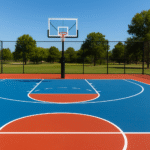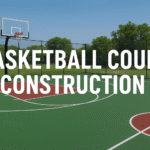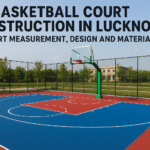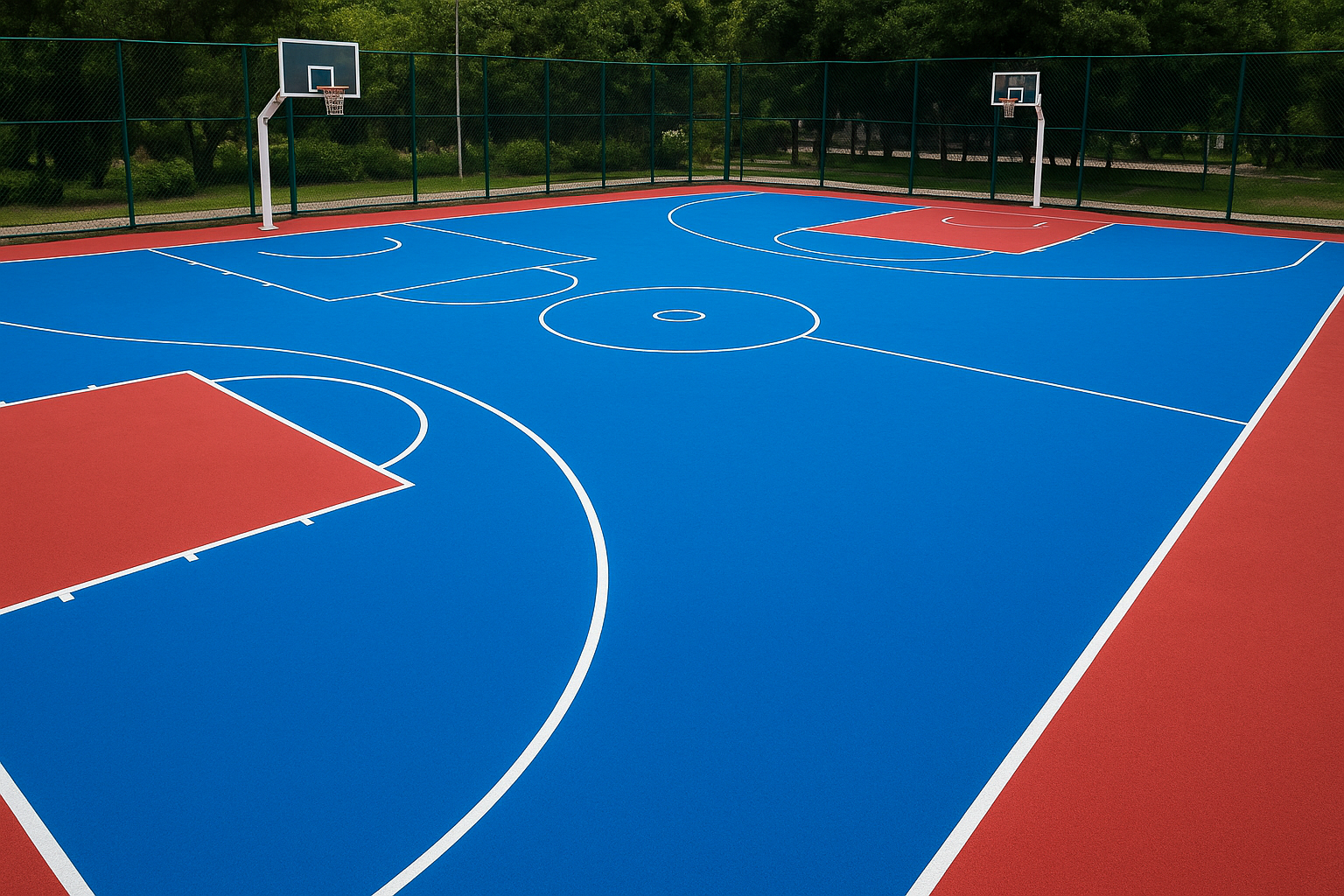Introduction
Synthetic court flooring service has revolutionized the way sports surfaces are designed, maintained, and experienced. Unlike traditional wooden or concrete courts, synthetic flooring offers unmatched versatility, durability, and safety. Whether it’s a basketball court, tennis court, or multipurpose sports arena, synthetic flooring has become the preferred choice for schools, sports clubs, and professional stadiums across the globe.
Have you ever wondered why some courts look brand-new even after years of heavy use? The answer lies in high-quality synthetic materials that are engineered for longevity and performance.
History and Evolution of Synthetic Flooring service
The journey of synthetic court flooring began as a response to the limitations of traditional hardwood or concrete surfaces. While wood provided excellent aesthetics and bounce, it was expensive to maintain and prone to weather-related damage. Concrete, on the other hand, was durable but harsh on athletes’ joints.
With the advancement of polymer technology, sports flooring evolved into synthetic materials that could mimic the performance of wood while offering resilience, flexibility, and easy maintenance. Today, modern synthetic floors integrate shock absorption, UV protection, and anti-slip technology, setting new standards for athletic performance and safety.
Types of Synthetic Court Flooring service
PVC Flooring
PVC (Polyvinyl Chloride) is one of the most popular synthetic flooring options. It offers a smooth, durable surface ideal for indoor sports. Its elasticity helps reduce impact on joints and enhances player comfort.
Polyurethane Flooring
Polyurethane flooring is known for its high resilience and superior shock absorption. Often used in multipurpose sports halls, it provides a firm yet forgiving surface suitable for basketball, volleyball, and indoor tennis.
EPDM Rubber Flooring
EPDM (Ethylene Propylene Diene Monomer) rubber is ideal for outdoor courts due to its weather resistance. It comes in a variety of colors, allowing customization, and provides excellent grip and cushioning.
Modular Interlocking Tiles
These tiles are easy to install and replace. They are perfect for areas where flexibility is needed, like temporary courts or community spaces. They also allow for easy drainage in outdoor settings.
Advantages of Synthetic Court Flooring service
Durability and Longevity
Synthetic floors are designed to withstand heavy foot traffic and intense sports activity, making them a long-term investment for any facility.
Low Maintenance
Unlike wood, synthetic surfaces do not require regular polishing or sanding. Routine cleaning is usually sufficient to maintain their appearance and performance.
Safety and Injury Prevention
With superior shock absorption and anti-slip properties, synthetic flooring reduces the risk of injuries, especially on high-impact sports like basketball or futsal.
All-Weather Usability
EPDM and polyurethane surfaces can endure harsh weather conditions, making them suitable for both indoor and outdoor use.
Aesthetic Appeal
Synthetic flooring comes in multiple colors and designs, allowing facility owners to create visually appealing courts that reflect branding or team colors.
Choosing the Right Synthetic Flooring
Selecting the ideal flooring depends on multiple factors:
-
Usage: High-intensity sports need more resilient surfaces.
-
Budget: Balancing cost with long-term benefits.
-
Location: Indoor vs. outdoor installation dictates material choice.
-
Maintenance: Some floors require more upkeep than others.
Comparing different types helps make an informed decision, ensuring you get the perfect mix of performance, safety, and aesthetics.
Installation Process
Site Preparation
The surface must be leveled, cleaned, and free of debris. Proper drainage is essential for outdoor courts.
Base Construction
A strong base ensures stability. Concrete or asphalt bases are commonly used, depending on the type of floor.
Laying the Flooring
Synthetic sheets or tiles are carefully laid and joined. Adhesives may be used depending on the material.
Maintenance Tips
-
Regular Cleaning: Sweep or mop to remove dust and debris.
- Avoiding Mistakes: Using harsh chemicals or dragging heavy equipment can damage the surface.
Cost Considerations
While the initial cost may be higher than traditional flooring, synthetic surfaces save money in the long run due to low maintenance and extended lifespan. Material choice, installation complexity, and customization options all influence pricing.
Applications of Synthetic Court Flooring
-
Indoor Sports Courts: Basketball, badminton, volleyball, futsal.
-
Outdoor Sports Courts: Tennis, pickleball, outdoor basketball.
-
Multi-Purpose Community Spaces: Schools, gyms, parks, and recreation centers.
Safety Standards and Certifications
Certified synthetic floors comply with international standards like EN 14877 or ASTM guidelines. These standards ensure safety, shock absorption, and performance reliability.
Eco-Friendly Options
Many synthetic floors use recycled materials, making them environmentally friendly. Choosing sustainable flooring reduces carbon footprint while maintaining durability.
Trends in Synthetic Court Flooring service
-
Color Customization: Personalize courts with team colors or branding.
-
Advanced Shock Absorption: Modern floors reduce fatigue and injury risks.
-
Smart Court Technology: Integrated sensors for performance tracking and analytics.
Case Studies
Schools, clubs, and stadiums have embraced synthetic flooring for better performance and aesthetics. For example, urban sports complexes in India now prefer EPDM and polyurethane floors for their resilience and vibrant appearance.
Common Myths and Misconceptions
-
Durability Concerns: Modern synthetic floors can last 10–20 years with proper care.
-
Cost-Effectiveness Doubts: Though initially expensive, low maintenance and longevity make it economical.
Conclusion
Synthetic court flooring service is transforming sports facilities worldwide. Offering durability, safety, and visual appeal, it is the ultimate choice for any modern sports environment. Investing in high-quality synthetic surfaces not only enhances player performance but also ensures long-term savings and sustainability.
FAQs
-
How long does synthetic court flooring last?
Typically 10–20 years depending on usage and maintenance. -
Is synthetic flooring suitable for all sports?
Yes, with material and surface customization for different sports. -
Can synthetic court installed outdoors?
Absolutely, especially EPDM and polyurethane surfaces designed for weather resistance. -
How often should synthetic floor maintained?
Cleaning Daily and minor inspections in monthly. -
Is it environmentally friendly?
Many synthetic floors use recycled materials and eco-friendly manufacturing processes.




